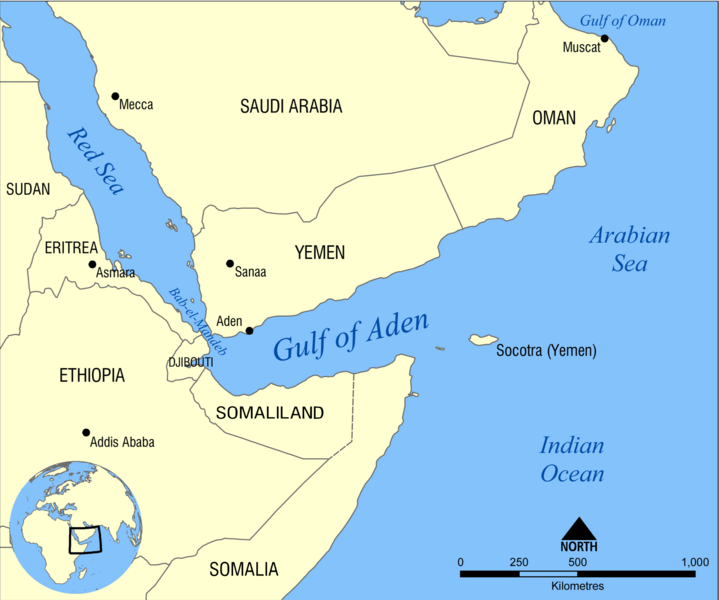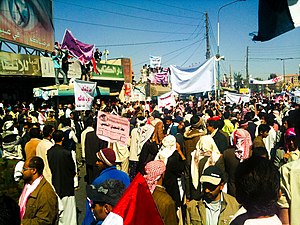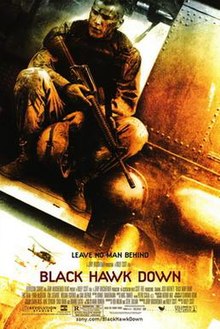 ∙ THE VOLATILE AND OFTEN DANGEROUS MIDDLE EAST
∙ THE VOLATILE AND OFTEN DANGEROUS MIDDLE EAST ∙ After leaving Mumbai, we spend 6 days cruising the expansive Arabian Sea until it narrows into the Gulf of Aden and then turns into the Red Sea
∙ This is our longest jaunt at sea – aside from the 7-day Atlantic Crossing home
∙ Of course, Osama bin Laden was buried in the North Arabian Sea, so the water's polluted
∙ The Gulf of Aden leads to the Red Sea and the important Suez Canal, which connects the Red Sea to the Mediterranean Sea and allows water transportation between Europe and Asia without navigating around Africa
∙ The Gulf of Aden is known as “Pirate Alley” due to the large amount of pirate activity in the area
∙ We'll be cruising right through the MIDDLE EAST (i.e., Western Asia to the north and North Africa to the South)
∙ Western Asia includes Turkey, Iran, Kuwait, Bahrain, Qatar, Untied Arab Emirates, Oman, Yemen, Saudi Arabia, Jordan, Iraq, Syria, Lebanon, Israel, Palestinian Territories and Cyprus – Georgia, Armenia, Azerbaijan, Afganistan and Pakistan are also sometimes included
∙ North Africa includes Algeria, Egypt, Libya, Morocco, Sudan, Tunisia, and Western Sahara
∙ The Sahara has effectively separated Northern Africa from the rest of Africa; as civilizations to the north migrated across the Mediterranean, the culture of North Africa became more closely tied to Southwestern Asia and Europe; the Islamic influence in the area is significant
∙ When we enter the Gulf of Aden, we'll be sandwiched between Yemen and Saudi Arabia to the north and Somalia to the south. I address these three places below.
∙ (REAL) PIRATES, TERRORISTS AND “ALLIES”
 ∙ The Republic of Yemen and 2011 Yemeni Uprising
∙ The Republic of Yemen and 2011 Yemeni Uprising ∙ In February and March 2011, an uprising against the government began, with many protestors demanding the resignation of the current leadership, particularly President Ali Abdullah Salah
∙ This was part of the "Arab Spring", a revolutionary wave of demonstrations and protests occurring in the Arab world
∙ Since December 2010, there have been revolutions in Tunisia and Egypt, civil war in Libya and Syria, civil uprisings in Bahraina and Yemen, and protests in 11 other countries
∙ A major slogan of the demonstrations has been, "The people want to bring down the regime."
∙ On 2/2/11, President Salah announced that he would not run for reelection in 2013 and would not pass power to his son
∙ Protests continued and were followed by a 6/3/11 bombing of the Presidential compound; the next day, Vice President Abd al-Rab Mansur al-Hadi took over as acting President
∙ Salah flew to Saudi Arabia to be treated, and Yemeni officials insisted his absence was only temporary; the government rejected demands for Yemen's first-ever democratic elections
∙ Yemen is said to have more than 60 million guns, and the average Yemeni woman bears 5 children

∙ The Kingdom of Saudi Arabia:
∙ Saudi Arabia is the largest country in the Middle East and an Islamic monarchy, ruled by the Saudi royal family (though the King must comply with Islamic law and the Quran)
∙ No political parties or national elections are permitted (but there are municipal elections)
∙ It has the world’s largest oil reserves and is the leading exporter of oil
∙ It’s criticized for its poor record of human rights treatment of religious and political minorities, and women
∙ Those arrested are often not informed of the crime of which they are accused or given access to a lawyer
∙ Prisoners are subject to abusive treatment and torture if they don’t confess
∙ At trial, there’s a presumption of guilt, and the accused is often unable to examine witnesses and evidence or present a legal defense
∙ Most trials are held in secret
∙ Punishments include beheading, stoning, amputation and lashing – there were 345 public beheadings between 2007 and 2010!
∙ There is no religious freedom; Islam is mandated, and all churches are Muslim
∙ The death penalty can be imposed for not only murder, but also rape, armed robbery, repeated drug use, apostasy (abandoning their religion), adultery, witchcraft and sorcery – off with Harry Potter’s head!!
∙ There is trafficking of women and widespread inbreeding due to the tradition of encouraging marriage between close relatives
∙ Women are treated like children, requiring a “guardian” to make decisions for her; in court, the testimony of 1 man is equivalent to 2 women
∙ Polygamy is permitted for men, who can marry a girl who’s only 10; men have the unilateral right to divorce; women can only divorce with her husband’s consent or judicial consent if her husband has harmed her
∙ Females receive half the inheritance a man does
∙ Up until a few months ago, women couldn’t drive. They must still sit in specially-designated sections in restaurants, and they must wear a black cloak covering their entire body and hair
∙ No law protects Saudi women from domestic violence
∙ On 9/25/11, King Abdullah decreed that women will, for the 1st time, have the right to vote and run in local elections, starting in 2015
∙ Alcoholic beverages are prohibited, and there are no movie theaters
∙ When Iraq invaded Kuwait in 1990, SA joined the anti-Iraq coalition and King Fahd, fearing reprisals from Iraq, allowed American and coalition soldiers to be stationed in SA; this led to an increase in Islamic terrorism in SA and in Western countries by Saudi nationals – the 9/11 attacks being the most prominent example since Osama bin Laden and 15 of the 19 hijackers were from SA
∙ They subsequently adopted a policy, distancing themselves from the U.S. and refusing to join the US in invading Iraq in 2003
∙ Still, terrorist activity increased dramatically, and they have taken more vigorous action to deal with the origins of Islamic terrorism
∙ King Abdullah is against the current protests and revolutions affecting the Arab world.
 ∙ The Somali Republic:
∙ The Somali Republic:∙ Where real pirates live . . . with positively no relation to the happiest place on Earth
∙ The Somali Civil War is ongoing and broke out in 1991, leading to destabilization
∙ Its Transitional Federal Government lost substantial control to rebel forces and declared a state of emergency in June 2009
 ∙ The UN, led by the US, attempted missions to provide humanitarian relief between 1993 and 1995, but withdrew after several gun battles in Mogadishu resulted in the death of Pakistani and US soldiers: most in the Battle of Mogadishu (as portrayed in the movie, “Black Hawk Down”)
∙ The UN, led by the US, attempted missions to provide humanitarian relief between 1993 and 1995, but withdrew after several gun battles in Mogadishu resulted in the death of Pakistani and US soldiers: most in the Battle of Mogadishu (as portrayed in the movie, “Black Hawk Down”) ∙ Since the mid-2000s, the conflict has taken a militant Islamic tone
∙ In 1/07, the US militarily interceded with airstrikes against Islamic positions, to catch or kill Al Qaeda operatives
∙ When Ethiopian soldiers (there to intervene and aid the fragile government) withdrew in 12/08, the southern half of the country rapidly fell into the hands of radical Islamic rebels
∙ 300,000 to 400,000 have died in the conflict – with the UN calling the killing of civilians in this civil war genocide
∙ Somalia is one of the poorest and most violent states in the world; Mogadishu is rated the 4th most dangerous city in the world
∙ Making things worse, 2011 saw their worst drought and famine in 60 years, but Islamic militants have banned delivery of relief supplies
∙ The significant problem with piracy emerged due to the collapse of governmental authority due to the war
∙ COMBATTING THE PIRACY PROBLEM, AND ASSURING A SAFE PASSAGE FROM INDIA TO EGYPT
∙ In 8/08, a multinational coalition established a Maritime Security Patrol Area (MSPA) within the Gulf of Aden to combat the piracy problem at sea, and the autonomous region of Puntland increased policing efforts on land – these efforts reduced pirate attacks in the Gulf of Aden from 86 to 33 per year
∙ Our ship’s Captain wrote to the passengers, informing us that “the likelihood of us being attacked is extremely low”, because there are many easier targets out there (i.e., “ships which transit these areas, many at slower speeds and with lower freeboards [distance from the waterline to the deck]”).
∙ As a defensive maneuver, we’re making a “high-speed run” (over 20 knots) across the ocean and Gulf of Aden. We’ll arrive early in Safaga Egypt at 4 p.m. on April 4th rather than 7 a.m. on April 5th.
∙ They’ve also rigged the lower levels with razor wire, which would cut anyone attempting to board.

∙ Our ship will be reporting to, and tracked by, UKMTO (United Kingdom Maritime Trade Organization), which coordinates the coalition warships in the area assigned to anti-piracy operations. Warships will be in our vicinity.
∙ Through the Gulf of Aden, we’ll remain in a IRTC (Internationally Recommended Transit Corridor)
∙ A close radar watch will be kept on the Bridge, and extra security guards will be rotating 24-hour “anti-piracy watch”
∙ The ship has LRAD’s (long-range acoustic devices) and charged water hoses, which they practiced using a few days ago.

∙ If there’s a suspicious vessel nearby, or an attempted boarding, an alarm will sound and an announcement will be made, with certain procedures in place which I won’t elaborate upon here. In short, it’s a scary place out there, but we should be fine.
























































































